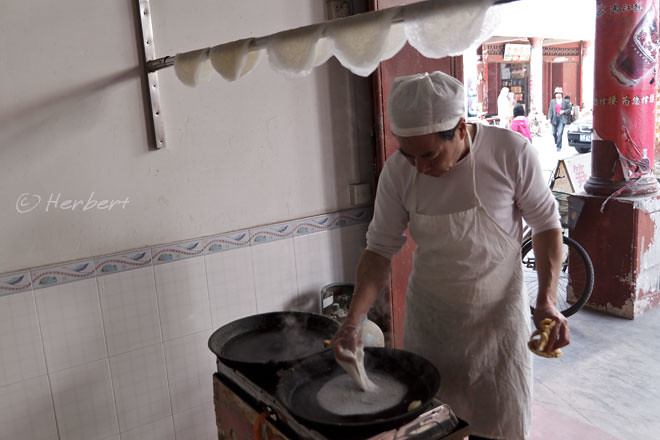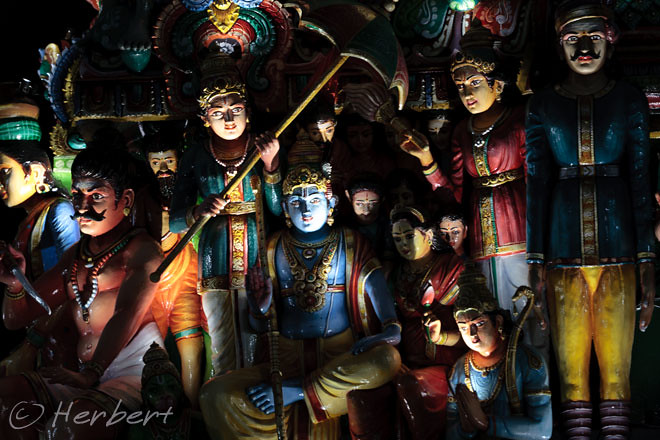
Location: Meizhou, Guangdong, China (24° 16′ 37.2″ N, 116° 6′ 57.6″ E)
Date: 22 December 2008; 10.50am
Camera: Canon 400D with Sigma 17-70/f2.8-4.5
A popular snack amongst the Fujian and Chaozhou dialect speakers in China, Taiwan, Singapore and Malaysia is a fresh spring roll known as popiah or literally thin cookie. A popiah is prepared by filling a thin paper-like pancake made from wheat flour with ingredients such as finely grated and steamed or stir-fried turnip, bean sprouts and any of the following: grated carrots, Chinese sausages, fried shallots, omelette and so on. The whole spring roll is normally eaten with sweet and chilli sauces.
These days popiah skins are produced by machines. However in most parts of China, they are still being made in the traditional way- a ball of wet and viscous wheat dough is held on one hand, which is quickly rubbed against a hot steel plate in circular motion and then lifted. This creates a very thin layer of the wet dough which adheres to the plate, cooked and then peeled off as popiah skin. A good popiah can only be made from a thin enough skin but so thin that it breaks under the weight of its fillings.






















